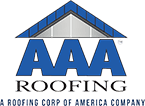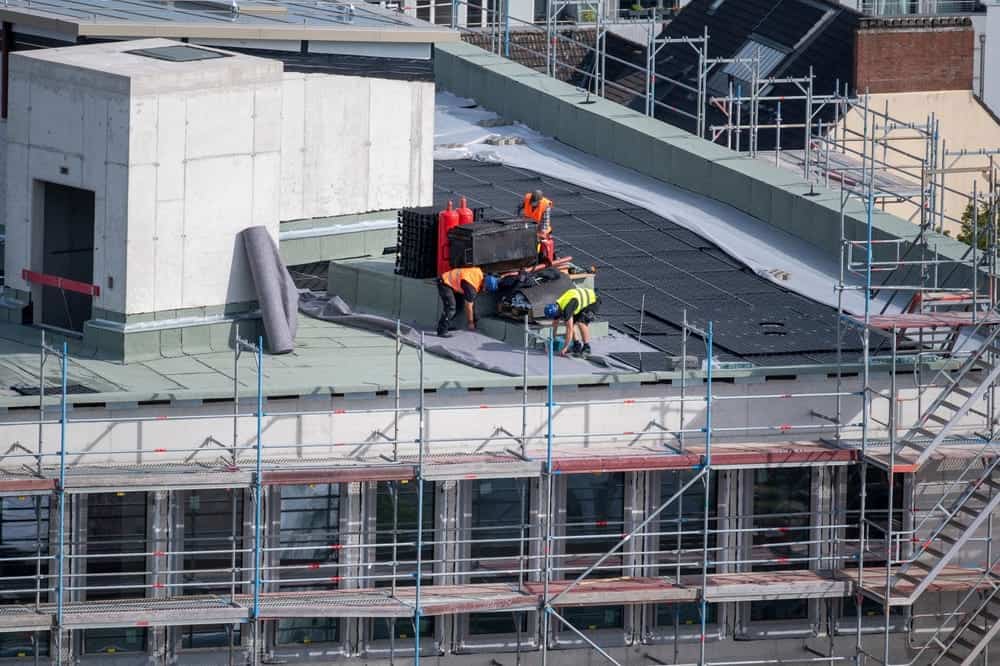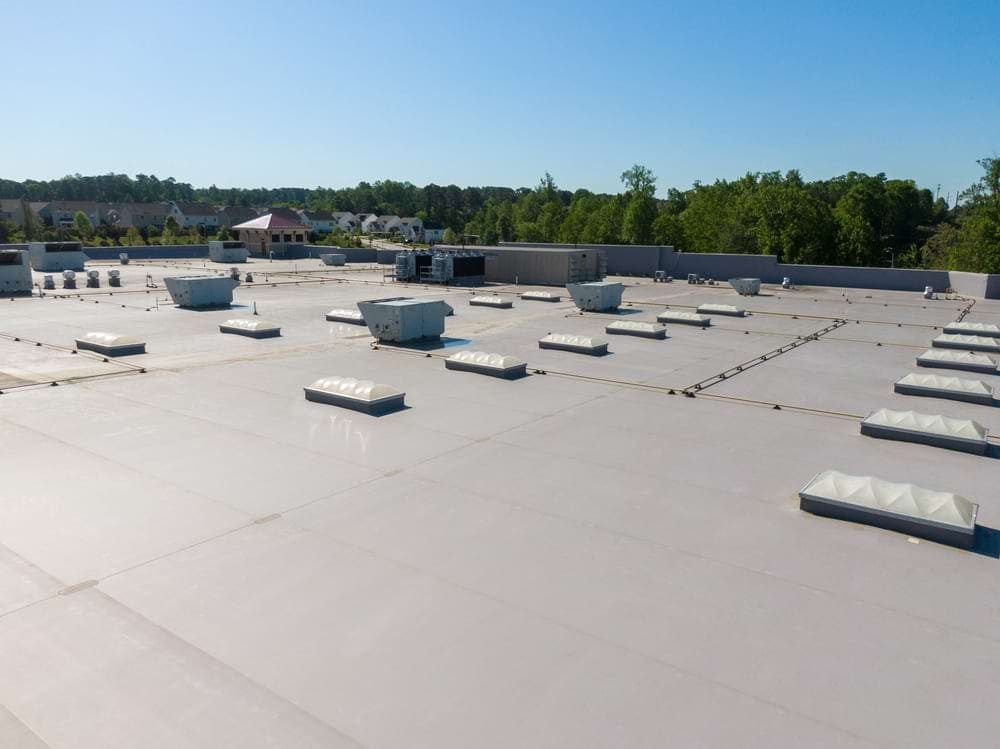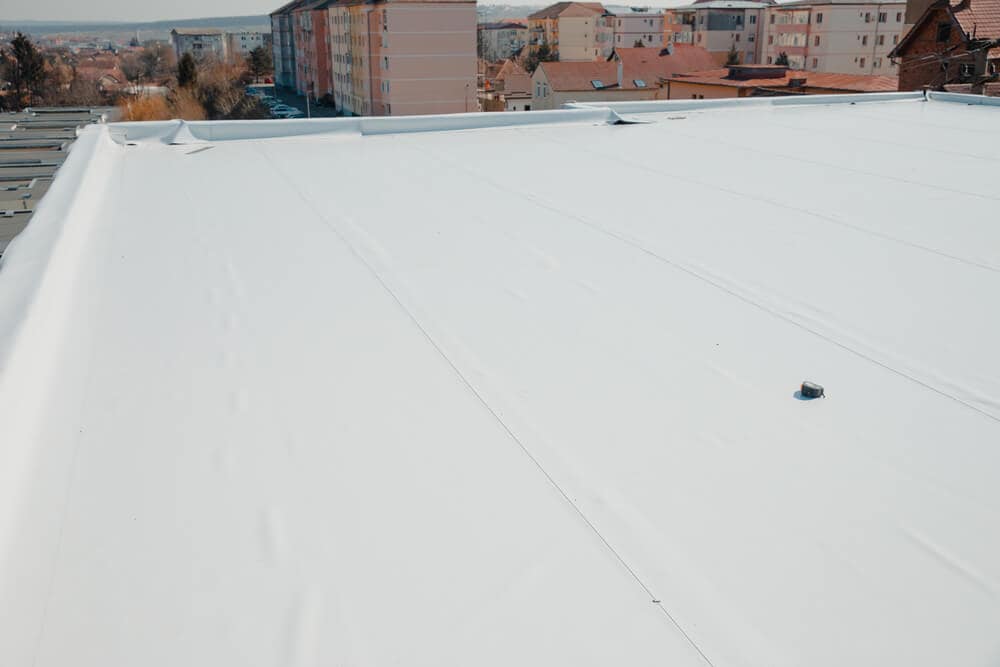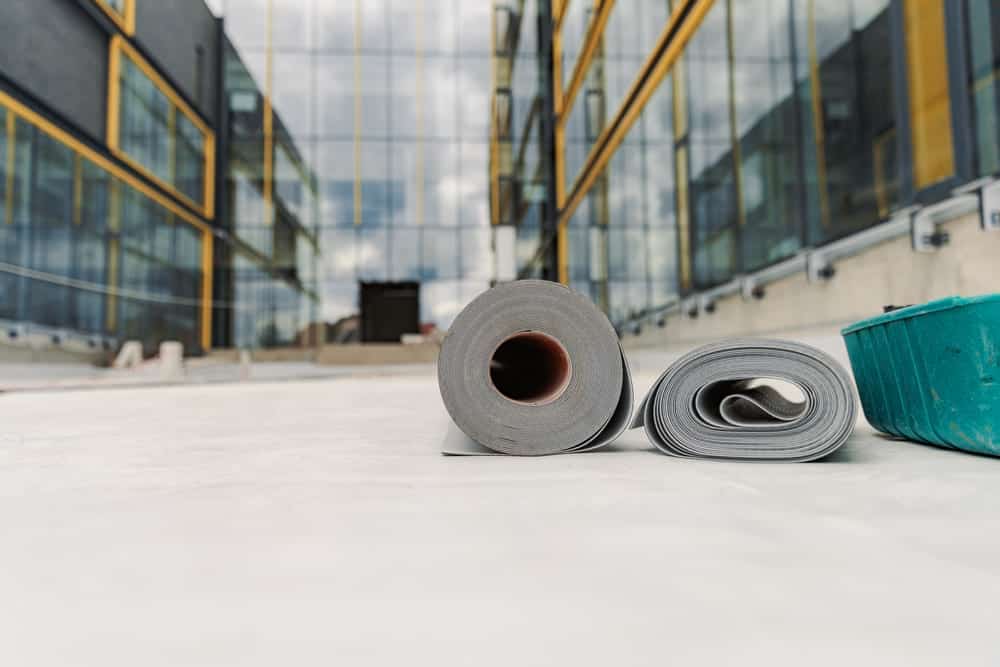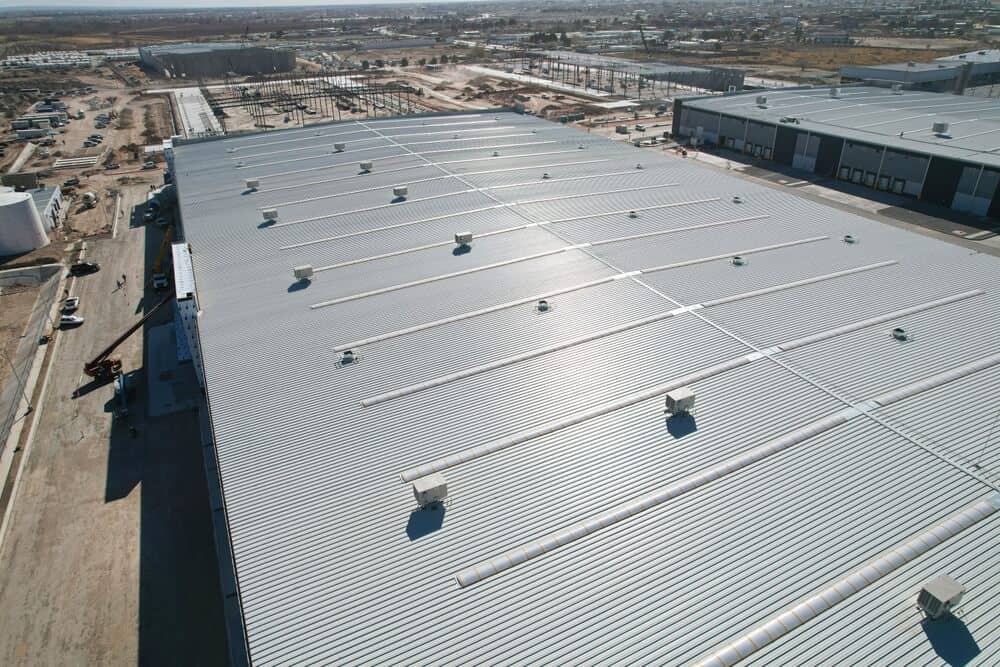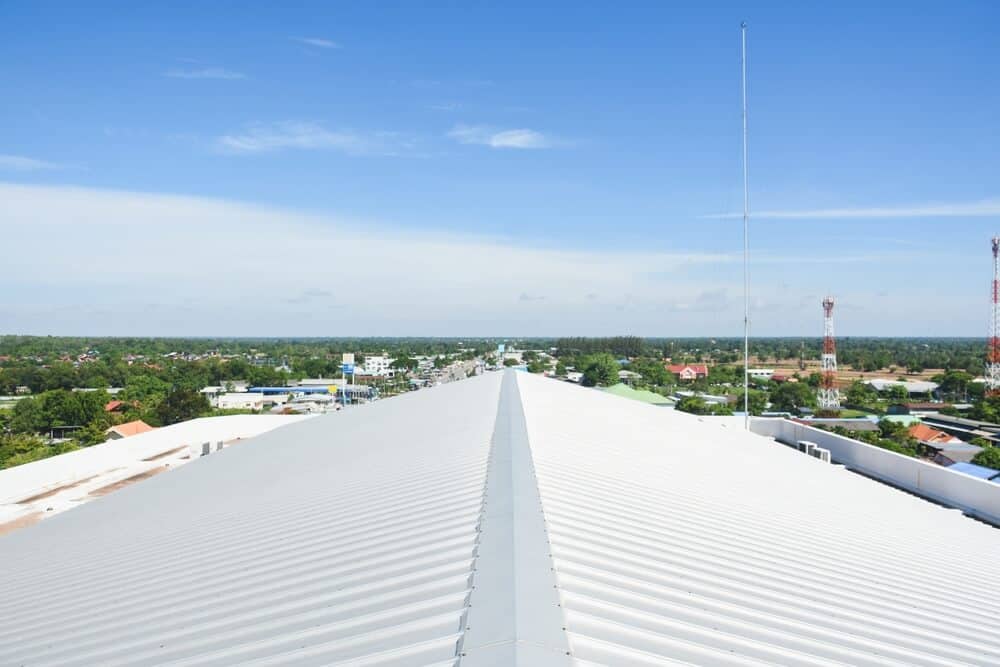When it comes to protecting your commercial building, understanding the parts of a commercial roof can help you make smart, cost-effective decisions. A well-designed roofing system does more than just shield your structure—it boosts energy efficiency by minimizing heating and cooling costs, supports critical equipment like HVAC units, and creates a safer, healthier space for staff, tenants, or visitors.
In this guide, we’ll break down the 7 key components that make up a high-performance commercial roof system—especially common in flat roofs and low slope roofs like those on office complexes, warehouses, and retail spaces.
Contents
The 7 Essential Parts of a Commercial Roof
1. Roof Deck
The roof deck (and the steel or wood framing underneath) is the structural base of the roof assembly and supports the entire roofing system. Typically made from materials like steel, concrete, or wood, the roof deck is designed to meet the specific building’s load-bearing and roof slope requirements. Typically handled by the contractor in charge of constructing the building, an improperly installed roof deck can compromise the entire system and lead to costly repairs over time.
2. Insulation
In modern commercial roofing systems, a layer of insulation is typically installed above the roof deck to enhance the building’s energy efficiency. This component helps retain indoor temperatures, allowing HVAC equipment to operate less frequently, reducing energy costs while improving occupant comfort. In commercial buildings, insulation is a key line of defense against rising heating and cooling costs.
3. Base Sheet
The base sheet is the first layer of the roofing materials installed over the insulation or cover board. It provides a surface for adhesion and helps anchor the roof membrane to the roof structure. In modified bitumen (Mod-Bit) and built-up roofing (BUR) systems, the base sheet plays a crucial role in weather resistance and longevity.
4. Single-Ply Membranes
For some roofing systems, such as those that use single-ply membranes, don’t require a base sheet. These systems involve applying and adhering just one layer of material over the insulation (though they can also be applied over a base sheet or other material), with overlapping seams adhered to each other. These membranes are typically made from TPO, EPDM, and PVC, and they’re the fastest, most efficient roofing material to install.
5. Ply Sheet
Next comes the ply sheet, a layer of reinforcing material that adds strength and durability to the roof membrane. Multiple plies may be used, especially in built-up roofing systems, to provide redundancy and extend the life of the commercial roofing system. It’s designed to withstand foot traffic and mechanical stress.
6. Cap Sheet
The cap sheet is the top layer of a multi-ply membrane system, providing UV protection, waterproofing, and improved durability. This layer is often embedded with granules or surfaced with materials that resist weathering, abrasions, foot traffic, or other roofing hazards. The cap sheet is the roof surface that’s exposed to the elements, and it plays a major role in preventing water infiltration and protecting the entire roof.
7. Flashing and Roof Penetrations
There are several areas that need to be flashed, which involves overlapping thin, pliable metal or rubber around objects that protrude through the roof. This includes roof penetrations from drainage system pipes and plumbing vents, skylights, and even objects like HVAC equipment. Flashing ensures a watertight seal that ensures the roof covering remains dry underneath, and they’re important for everything from a sloped roof to a flat roof system.
Why It Matters for Your Commercial Roofing Project
Every commercial roofing project is at least slightly different. Whether you’re working on an industrial warehouse, office complex, or retail plaza, understanding the parts of a commercial roof puts you in control. It helps you ask the right questions, understand bids and warranties, and avoid surprises down the road. You’ll be able to choose the right roof membrane for your building and understand everything happening underneath it.
It also highlights the key differences between a residential roof and a commercial flat roof—differences that matter when it comes to materials, design, and performance. With a residential roofing system, the process and all of the components are entirely different. And, with so much riding on the roof of your commercial property, knowing what makes up the entire roofing system of a commercial building is invaluable for property owners and facility managers alike.
Trust AAA Roofing for Your Commercial Roofing Needs
At AAA Roofing, we specialize in commercial roofing systems built to last. From system design and material selection to installation and maintenance, we bring decades of experience to every project—whether you’re working on a new build or replacing an aging commercial flat roof. Our team of skilled professionals will ensure your roof is properly sealed, resistant to water infiltration, and optimized for maximum energy efficiency.
We also handle all the details—from roof drains to roof penetrations, parapet walls, and roof edges—so you can focus on running your business.
If you’re looking for a reliable commercial roofing contractor, AAA Roofing proudly serves the commercial roofing industry with over 35 years of experience. Whether you need repairs, a complete re-roof, or help understanding your roof structure, we’re here to help. Contact us today to learn how our team can protect your investment and keep your commercial flat roof performing at its best.
